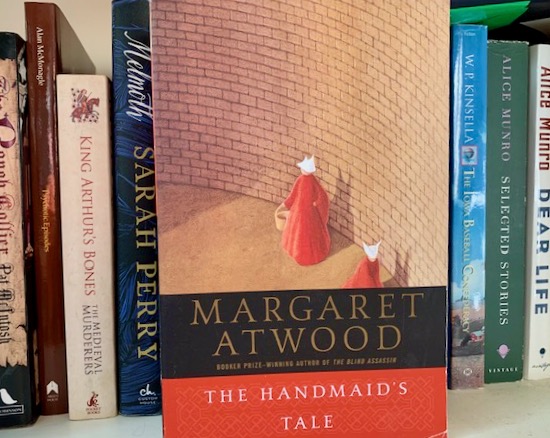Margaret Atwood may be the most significant author in world literature who has not yet won the Nobel Prize. Two of her novels (The Blind Assassin and The Testaments) have won the Booker Prize—the elite annual British award for the best novel written in English and published in the UK or Ireland. And four other novels have been finalists for the same award: Alias Grace, Oryx and Crake, Cat’s Eye, and The Handmaid’s Tale. Any of these I might have chosen as number 6 in “The Ruud List of the 100 Most Lovable Nobels in the English Language.” In particular, Atwood’s 2000 novel The Blind Assassin, which was also listed on Time magazine’s “100 Best Novels Since 1923,” was a major contender. But who can deny the overall cultural influence of Atwood’s best-selling novel, The Handmaid’s Tale? Not only has the novel sold millions, but the longrunning television series that it spawned has given the story many more fans. And aside from being a finalist for the Booker Prize, the book also won Atwood Canada’s prestigious Governor General’s Award, as well as the Arthur C. Clarke Award for best science fiction novel published in Britain for the year 1985.
In case you’ve been living in a cave for the past several years, let me quickly summarize the situation of The Handmaid’s Tale: Set in the near future in New England, the novel depicts a futuristic patriarchal theocracy, the Republic of Gilead, established after a white supremacist faction overthrew the democratic government of the United States. The narrator and protagonist of the book, Offred (thus named because she belongs to Fred, one of the Commanders in the Gilead hierarchy) is a Handmaid: her role in this society is to bear a child to her master, because his wife, like most of the women in this society, is not fertile (the result of the pollution of the environment).
Only men have any position of power or influence in Gilead. Women cannot legally own property or money, and are denied the right to literacy. This fact particularly rankles with the Commander’s wife, Serena Joy, a former television evangelist who was highly invested in the patriarchy and helped bring about the revolution that created Gilead, only to find that it was not quite the ideal she envisioned. In addition to Handmaids and Wives, other women have specific roles in this society: Marthas are cooks and maids, Aunts are those who train and essentially brainwash Handmaids so that they accept their roles—that is, what they must do during the “Ceremony,” in which they are basically raped by their Commmanders while the wife looks on, all performed as a religious ceremony. All women must abide by a strict dress code that identifies them—not unlike the Stars of David that Nazis forced Jews to wear so that they could be instantly identified.
We do learn that Offred had tried to escape to Canada with her husband and her daughter before Gilead had tightened its iron grip across the whole country. She had been captured and her daughter taken from her and given to one of the ruling families. Much of her attention is focused on finding her daughter and escaping with her from Gilead. At the urging of the master’s wife, who believes he is infertile, Offred begins a sexual affair her master’s driver Nick, who becomes her confidante.
I won’t reveal any more of the plot, just in case you haven’t read the book. But suffice it to say that this novel, what Atwood calls “speculative fiction” rather than science fiction, depicted an imagined future based on certain societal and political trends Atwood saw at work in 1980s America. Since those trends were magnified exponentially with the rise of Trumpism in America, the television series based on the book gained wide popularity in 2017. It was the success of the series that inspired Atwood to write The Testaments, the sequel to The Handmaid’s Tale, to great success and a Booker Prize. To some extent the sequel gave the continuing TV show some direction, though it may have jumped the shark since then.
But it’s important to stress that Atwood’s novel is not a narrowly focused satire of excesses of some particular politician. Keep in mind that one of the major influences on Atwood’s creation of The Handmaid’s Tale was her study of American Puritanism when she studied at Harvard. The book is a warning about dangerous trends in modern culture, not only in the U.S. but throughout much of the world, that glorify some of history’s most egregious offenses, and seek to normalize them in the modern world. In that sense it is a worthy successor to books like Orwell’s l984 or Huxley’s Brave New World, or even Sinclair Lewis’s It Can’t Happen Here. You’ve gotta read this book if you haven’t. Don’t rely on the TV series for what you know about Atwood’s magnum opus.

